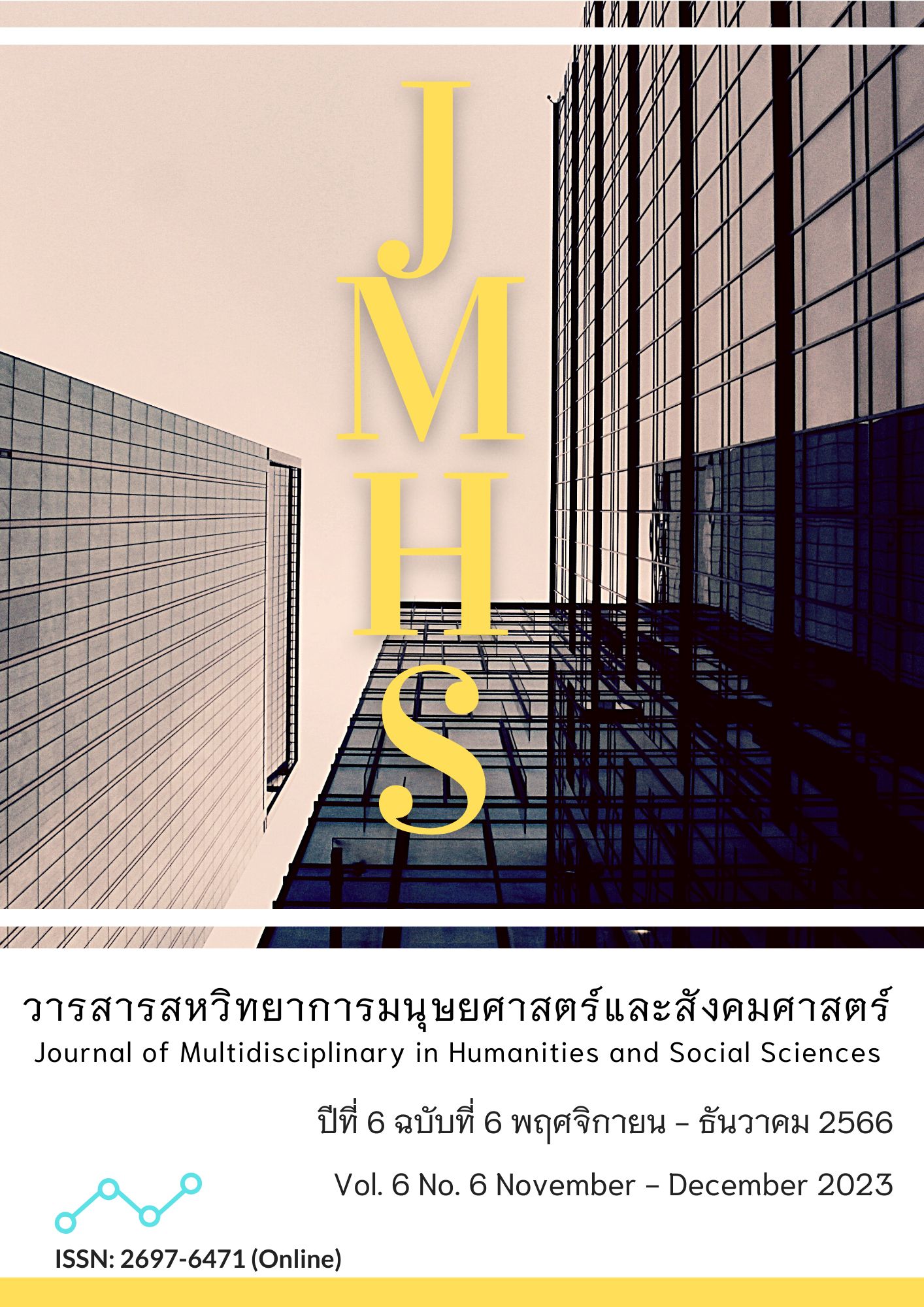Synthesize Data for Designing 360 Degree Stimulation Video for Presenting Smart City Data Platform Management System
Main Article Content
Abstract
This article aimed to (1) study the development of a 360-degree stimulation video for presenting Smart City data platform management systems and (2) synthesize data for designing a 360-degree stimulation video for presenting Smart City data platform management systems. The method was qualitative research. The research zone was Phuket City. The 10 experts who synthesized and determined the data and content in Thailand Smart City and the 5 experts involved in the process of designing 360-degree stimulation videos were involved in purposive sampling. The deep interview tool by quality of data and content in the Smart City process of design video and synthesis of data was descriptive. The results showed that the smart city presentation uses original content in the field of smart cities and city information platforms by presenting sample data from all 7 smart cities to create awareness among the public and 360-degree video design using Phuket City as an example to explain the smart city information management system.
Knowledge of the research was that the design of a 360-degree stimulation video for presenting the Smart City and Data Platform Management System can be practiced by using the Phuket Management System. The result can be applied to the present Smart City and Data Platform Management System for determining data to create media to encourage knowledge and better understanding by simulating Smart City to promote and view virtual reality, and the advantages of Smart City will be developed in the future.
Article Details

This work is licensed under a Creative Commons Attribution-NonCommercial-NoDerivatives 4.0 International License.
Views and opinions appearing in the Journal it is the responsibility of the author of the article, and does not constitute the view and responsibility of the editorial team.
References
ข้อมูลเมืองภูเก็ต. (2562). ภูเก็ตสมาร์ทซิตี้ แพลตฟอร์มข้อมูล. สืบค้นเมื่อ 22 เมษายน 2566, จาก https://www.phuketdata.org/home
จุฑามาศ พูลสวัสดิ์. (2560). PHUKET Smart City ภูเก็ต ต้นแบบเมืองอัจฉริยะแห่งแรกของไทย (ศูนย์ศึกษามหานครและเมือง). สืบค้นเมื่อ 25 มกราคม 2565, จาก http://www.furd.in.th/cities/thai-cities-reviews/view/z6GxQ4DmQLrm/
ดุลยเทพ ภัทรโกศล. (2559). การพัฒนาสื่อเรียนรู้เสมือนจริงบนเครือข่ายคอมพิวเตอร์ด้วยเทคโนโลยีภาพถ่ายพาโนรามา 360 องศากรณีศึกษา: เว็บไซต์ฐานข้อมูลแหล่งเรียนรู้มหาวิทยาลัยมหาสารคาม. วารสารวิชาการการจัดการเทคโนโลยีสารสนเทศและนวัตกรรม มหาวิทยาลัยราชภัฏมหาสารคาม, 3(1), 53-58.
ประกาศคณะกรรมการขับเคลื่อนการพัฒนาเมืองอัจฉริยะ. (2562). เรื่อง หลักเกณฑ์การประเมิน และคุณสมบัติ วิธีการ และกระบวนการในการพิจารณาการเป็นเมืองอัจฉริยะ. สืบค้นเมื่อ 10 ธันวาคม 2565, จาก https://www.depa.or.th/storage/app/media/file/Smart%20City%201-2562-02-final.pdf
ภาฝัน จิตต์มิตรภาพ, ฤๅเดช เกิดวิชัย, พรกุล สุขสด และ ดวงกมล จันทรรัตน์มณ. (2565). ปัจจัยขับเคลื่อนความสำเร็จในการพัฒนาเมืองอัจฉริยะ จังหวัดภูเก็ต. วารสารปัญญาภิวัฒน์, 14(1), 188-202.
สุริยานนท์ พลสิม. (2561). นิยาม องค์ประกอบ ตัวชี้วัด และผลลัพธ์ของเมืองอัจฉริยะ. สืบค้นเมื่อ 25 มกราคม 2565, จาก https://www.researchgate.net/publication/331008437_niyam_xngkhprakxb_tawchiwad_laeaphllaphthkhxngmeuxngxacchriya_Understanding_Smart_City.
สำนักงานส่งเสริมเศรษฐกิจดิจิทัล. (2566). แพลตฟอร์มข้อมูลเมือง: CDP. สืบค้นเมื่อ 1 กรกฎาคม 2565, จาก https://www.citydata.in.th/
สำนักงานเมืองอัจฉริยะประเทศไทย. (2562). เมืองอัจฉริยะ. สืบค้นเมื่อ 5 มกราคม 2565, https://www.depa.or.th/th/digitalservice/smartcity.
เสมอ นิ่มเงิน. (2562). เมืองอัจฉริยะ (Smart City) คืออะไร และจะเกิดขึ้นได้อย่างไร. สืบค้นเมื่อ 25 มกราคม 2565, จาก http://www.prd.go.th/ewt_dl_link.php?nid=210471& filename=expert.
อัญนิสา ศิริพัันธ์ุ์ และ เนาวีนิตย์ สงคราม. (2566). การพัฒนากิจกรรมการสอนเสริมโดยใช้้วีดิทัศน์ 360 องศาแบบมีปฏิสัมพันธ์เพื่อส่งเสริมสุขวิทยาส่วนบุคคลสำหรับนักเรียนอนุบาล. วารสารเทคโนโลยีและสื่อสารการศึกษา, 6(18), 66-76.
Kemp, J. E. (1989). Planning, Producing, and Using Instructional Media. USA: Harper & Row.


